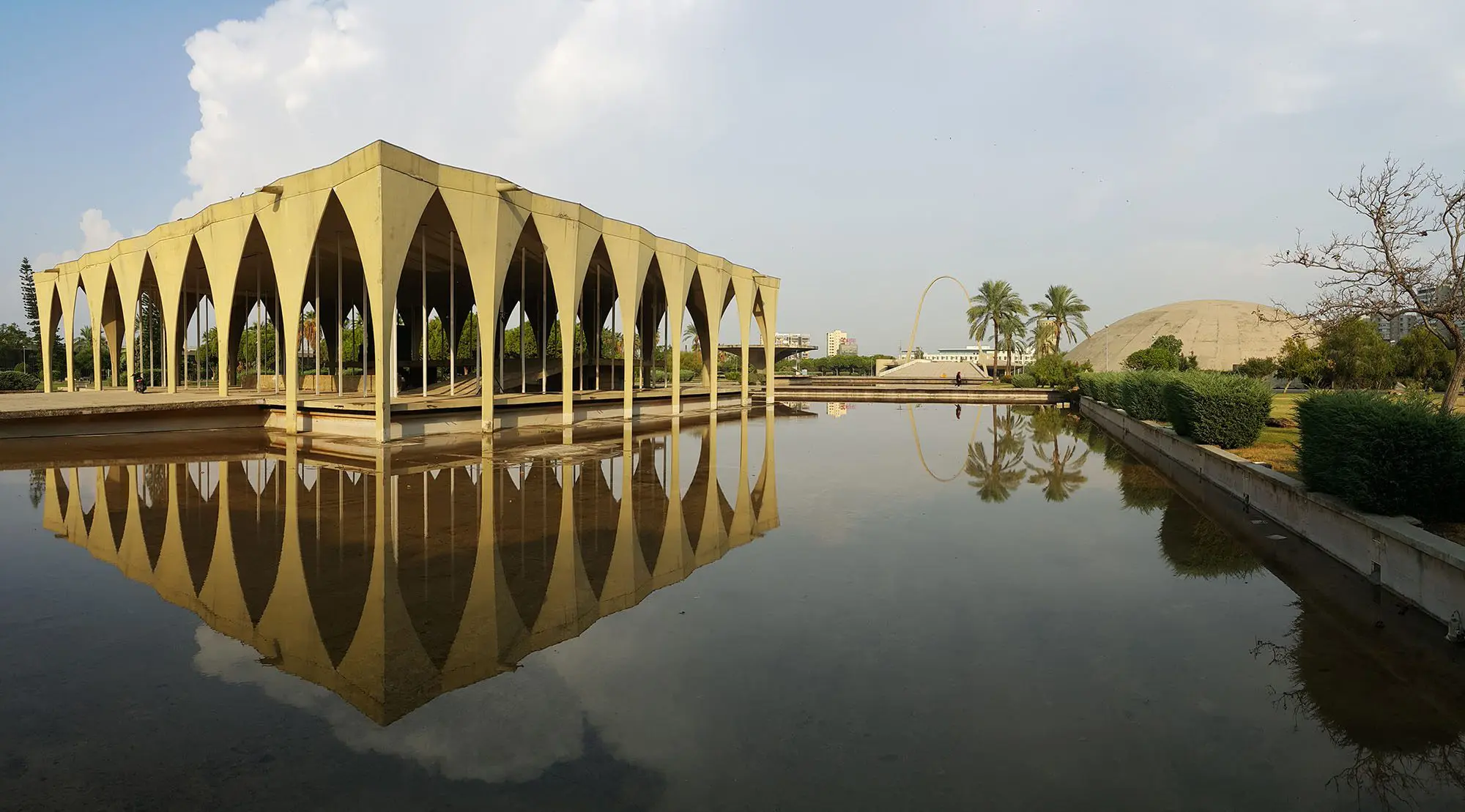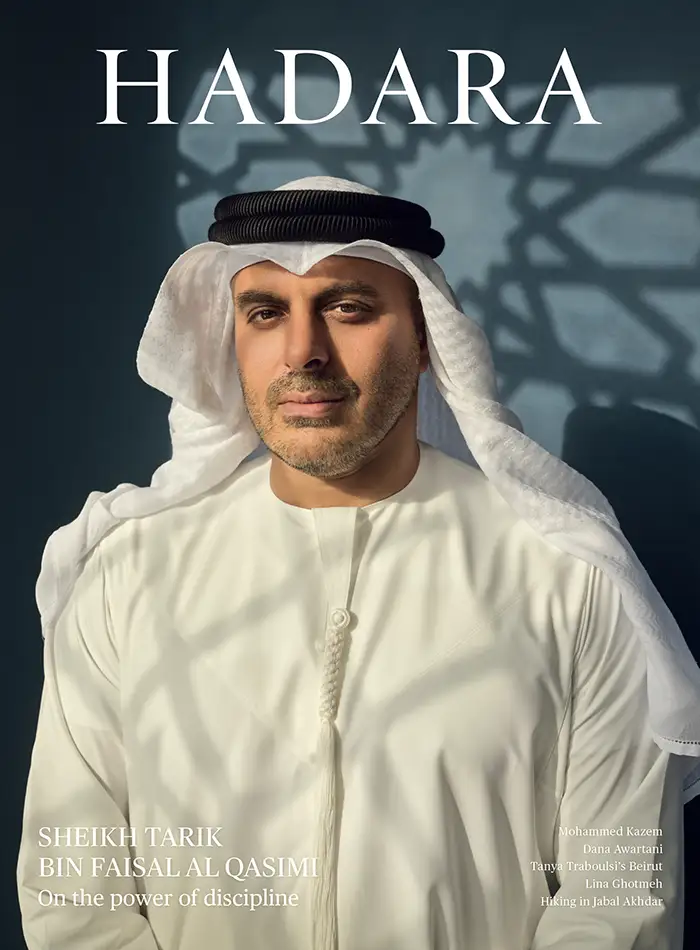Once Upon a Time In Tripoli
An architectural gem by Oscar Niemeyer in the Lebanese port city of Tripoli wins UNESCO status, and with it the prospect of new life.
By Warren Singh-Bartlett
Depending on how you approach Tripoli’s Rashid Karami International Fair, what first catches your eye is either a soaring arch reminiscent of Eero Saarinen’s St. Louis Gateway, a cluster of simple shapes—a dome, a star-shaped pyramid and a cylinder—or, if you arrive by autostrade, the monumental main entrance sheltering beneath a muscular concrete canopy that sets the heart racing in a way newer, taller structures can only envy.
While your first impression may be of a giant child’s building blocks, enter the sprawling million-square-metre complex and a distinctly Brazilian—or rather Brasilia—vibe emerges.
If echoes of Brazilian architect Oscar Niemeyer abound, that’s because he designed it, although until a few years ago this was little known, even in architectural circles. But there’s no doubt it’s his work. In the Lebanese Pavilion, an airy, elevated cube pierced by pointed arches, there are flashes of the Itamaraty Palace in Brasilia; in the Civil Defence Station reminders of the Pampulha Church in Belo Horizonte; and the manager’s house is so reminiscent of Niemeyer’s Rio home, the Casa das Canoas, that it’s almost a replica.
Come in the summer, when the gardens are in bloom, and you can imagine yourself wandering the crumbling, cracking ruins of a future city wildly at odds with the Mamluk and Crusader heritage down the road. But come in the winter, when the reflecting pools are filled with rainwater, and the way they mirror Tripoli and the snow-covered peaks beyond makes it impossible to imagine these fairgrounds, this architecture, could ever have been built elsewhere.
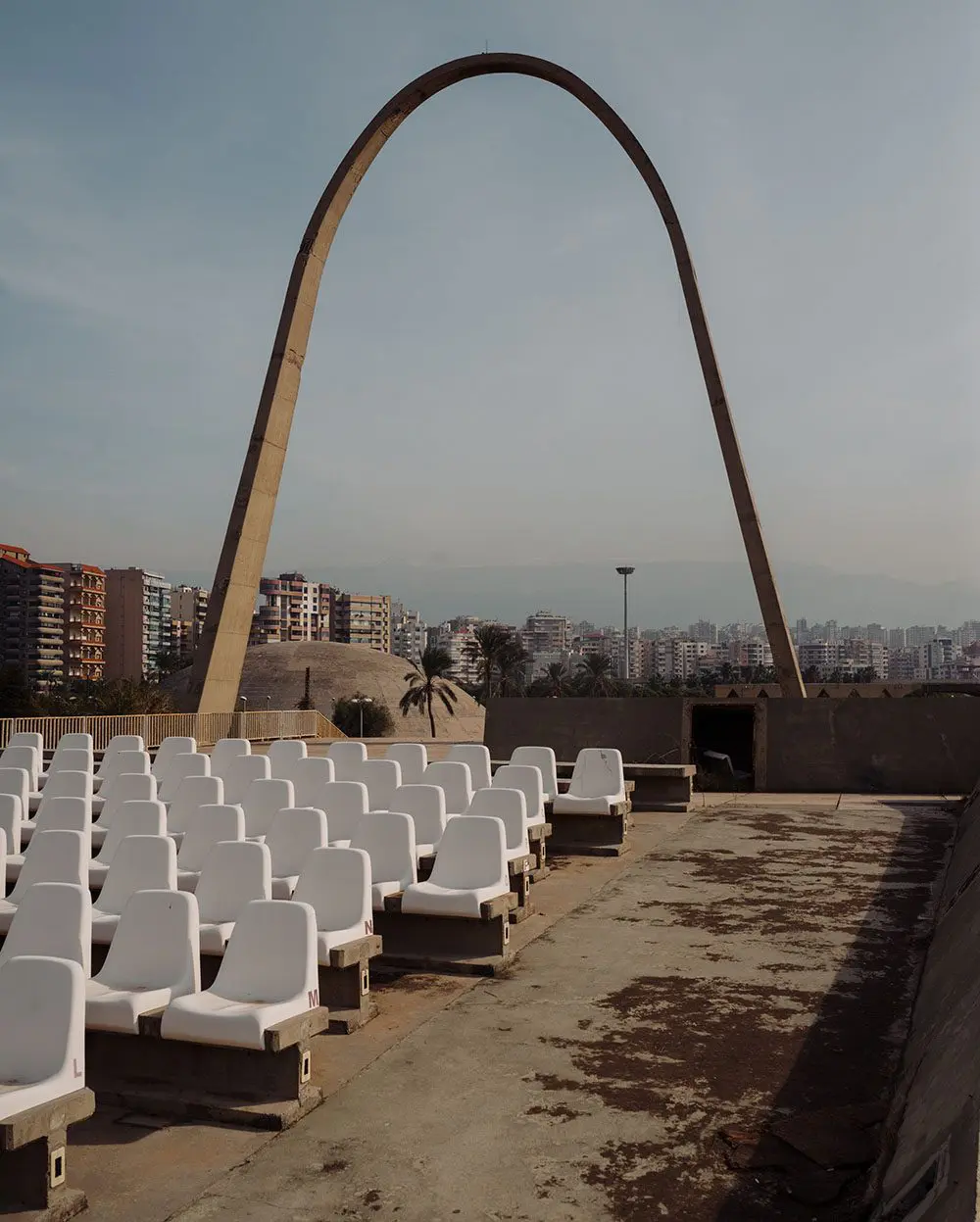
In the Lebanese Pavilion, top image, an airy, elevated cube pierced by pointed arches, there are flashes of the Itamaraty Palace in Brasilia, both designed by architect Oscar Niemeyer. Photo: Wassim Naghi. In the northern part of the fair, an outdoor amphitheatre is surmounted by a monumental arch forming a symbolic gateway to modernity and a landmark for the city of Tripoli. Photo: Alex Atack.
“Niemeyer loved Lebanon,” says Jad Tabet, architect and former president of Lebanon’s Order of Engineers. “He came by boat in 1962 and stayed for two months. My father was an architect and a communist. So was Niemeyer, and they had a common friend, (Brazilian novelist) Jorge Amado. So when he wanted to see Lebanon, my father told me to drive him every weekend, to Baalbek, to the cedars, to Byblos, all the sights.”
In 1962, the land on which Niemeyer’s future fair would stand was covered in the citrus groves that gave Tripoli the epithet “al fayha”, or “the fragrant”. Wassim Naghi, an architect and activist who poured years into compiling files on the fair, says Niemeyer was entranced by the city’s setting, and its architectural treasures. “He stayed for a month at the Al Montaza Guesthouse, sketching the plans with the fair’s director, Amado Shalhoub,” Naghi says. “Shalhoub’s wife even remembers serving him tea and cakes.”
These days, a permanent international fair is a white elephant, but in the pre-mass travel world they were global shopfronts and places to sign deals, so landing one of the world’s top architects to design Lebanon’s was a coup.
Fresh from the success of Brasilia—Brazil’s purpose-built capital, which has become synonymous both for its daring architecture and its utopian vision of urban planning—Niemeyer was riding high. So was Lebanon, which was in its period of post-independence prosperity sometimes referred to as the “Merchant Republic”.
“It’s in a state of suspension between abandonment and dysfunction,” says Naghi, who along with Tabet and several other Lebanese architects fought for 20 years to get the fair protected before securing UNESCO World Heritage recognition this January. “Everything is either abandoned, or incomplete, or inaccessible, or unsafe.”
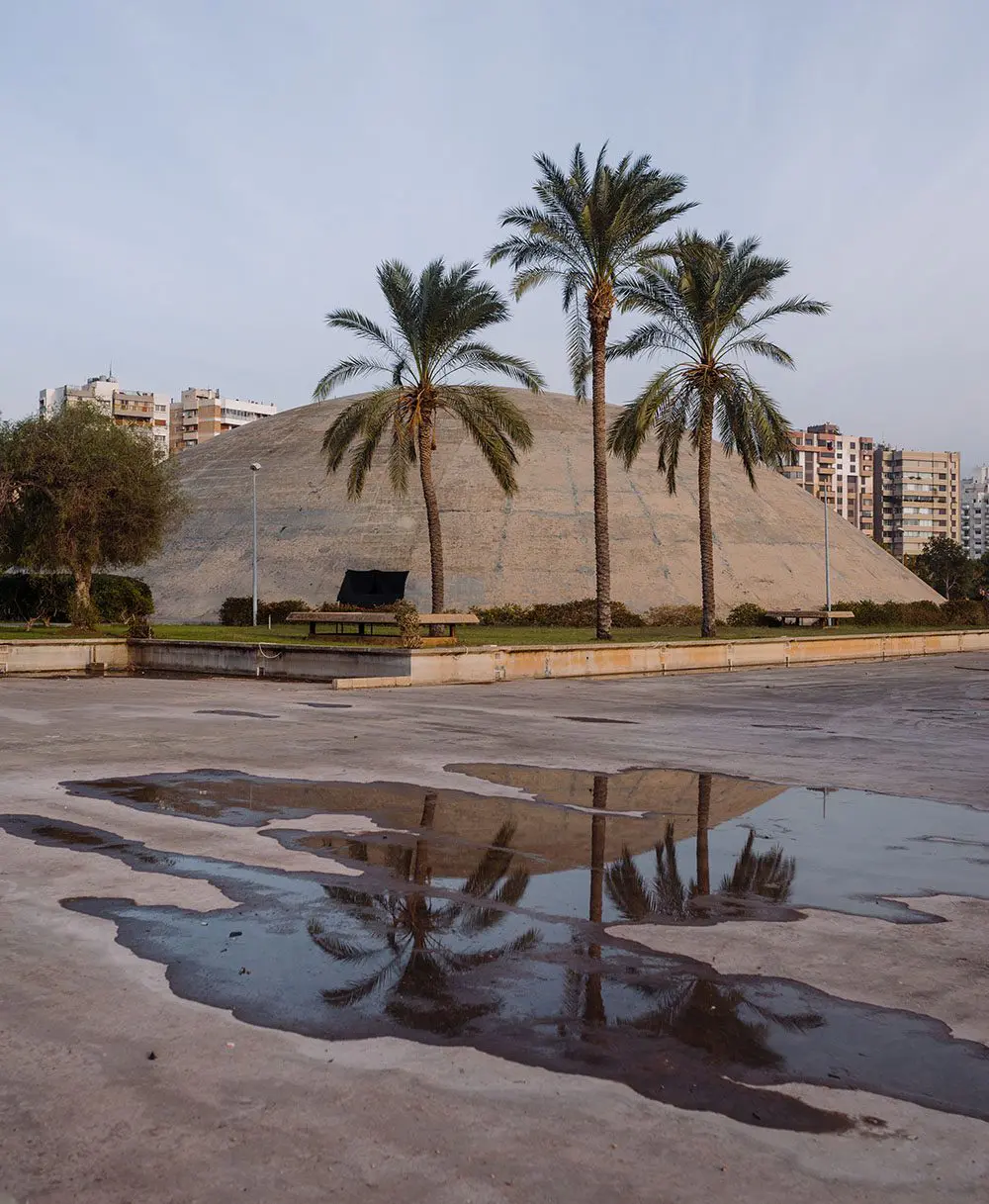
Niemeyer’s designs for the Tripoli fairground were modelled on Brasilia, but he also experimented with new structures. The theatre beneath the dome was meant to have a rotating stage. Photo: Alex Atack.
But from the start, the fair had troubles. Part of President Fouad Chehab’s promise to develop outside Beirut, the fair was deeply unpopular with the capital’s elites. It was also disliked in Syria, which feared the Tripoli fair would overshadow the one in Damascus. Internal and external interference—Lebanon’s eternal Scylla and Charybdis—scuppered the 1966 deadline, and war with Israel in 1967 and 1972 extended the delay.
As opening was pushed back to 1970, 1973 and finally 1975, Niemeyer’s frustrations grew. After all, Brasilia had taken only four years. Still, as Tabet and Naghi’s research proves, he continued to sign off on project documents and make decisions, revisions and comments until the outbreak of hostilities in 1975. Tripoli was his first project outside of the Americas, and Naghi says Niemeyer understood its value as a Middle Eastern calling card.
Tabet says that despite the shambles, Niemeyer remained keen on Lebanon and may have visited Beirut again shortly before the civil war. “I met an archaeologist recently who told me Niemeyer was negotiating with the government to design a new chamber of deputies,” Tabet says. “He said he has photos with Niemeyer in downtown Beirut in 1975.”
Whether that’s true—and Tabet has yet to see those photos—before the finishing touches could be made, geopolitics intervened and Lebanon tipped into 15 years of civil and proxy wars.
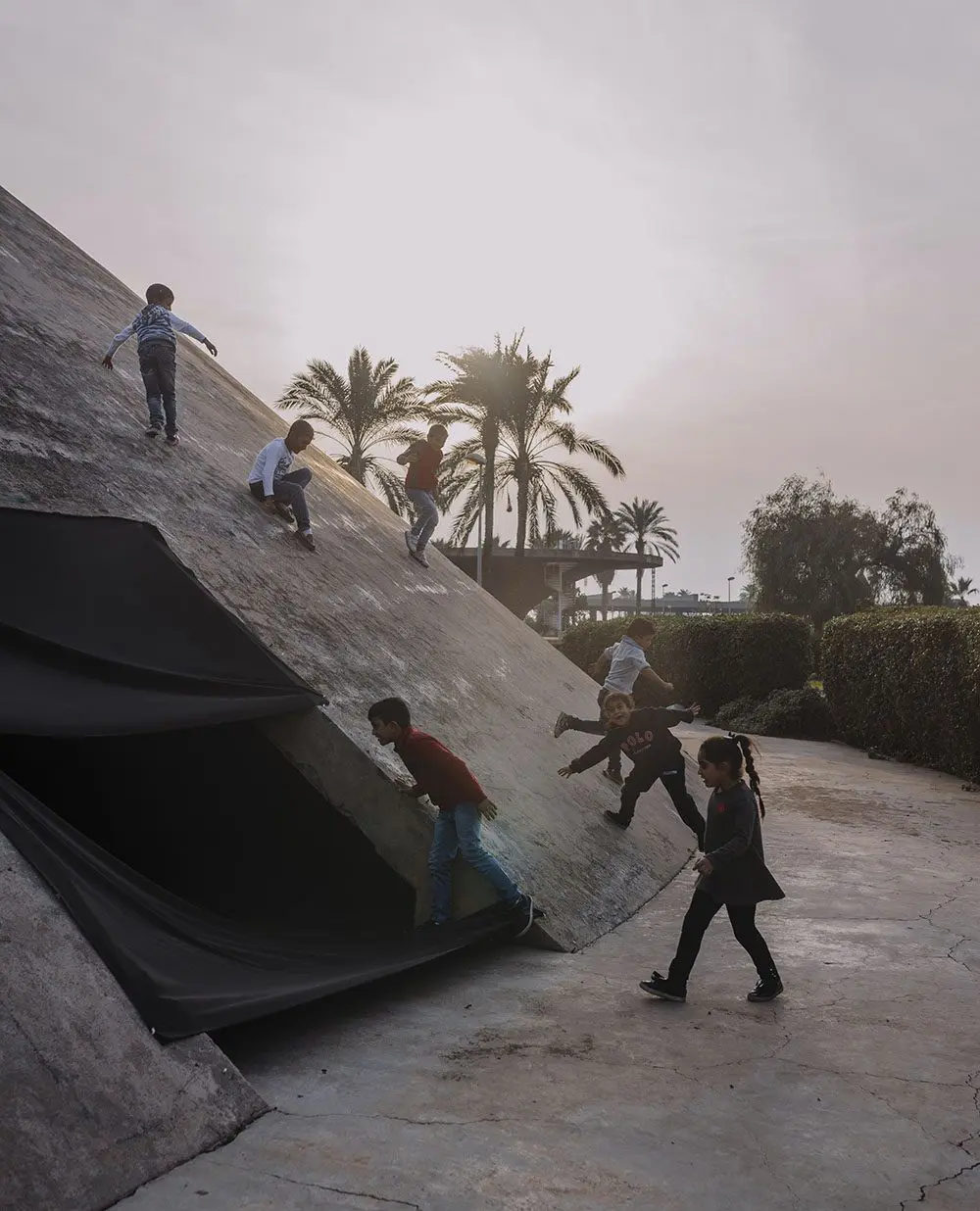
Photo: Alex Atack.
Commandeered by armies and militias, the fair became an ammunitions dump, barracks, and a torture and detention centre. Then, in 1982, the Syrian Army moved in. By the time they left, whatever hadn’t been destroyed was looted, including tiles, mirrors, windows, wiring and piping. Almost finished in 1975, the fair was once again just concrete shells.
There were two brief attempts at revival, in 1993 and 1997—the latter resulting in the enclosure of part of the 700-metre-long “boomerang” Niemeyer designed as a tent-like canopy for international pavilions. Then, as domestic politics intervened, it was abandoned. Plans surfaced to turn the grounds into a Lebanese “Disneyland”, then a cut-price Chinese emporium, but thankfully both died before the fair could be destroyed. With occasional exceptions, the site was shuttered and closed to the public.
“It’s in a state of suspension between abandonment and dysfunction,” says Naghi, who along with Tabet and several other Lebanese architects fought for 20 years to get the fair protected before securing UNESCO World Heritage recognition this January. “Everything is either abandoned, or incomplete, or inaccessible, or unsafe.”
Well, almost everything. In 2018, European Union funding supported an international competition to rehabilitate the guesthouse and turn it into a workshop for Tripoli’s beleaguered artisans. The winner was a young, Beirut-based practice run by Charles Kettaneh and Nicolas Fayad, called East Architecture Studio.
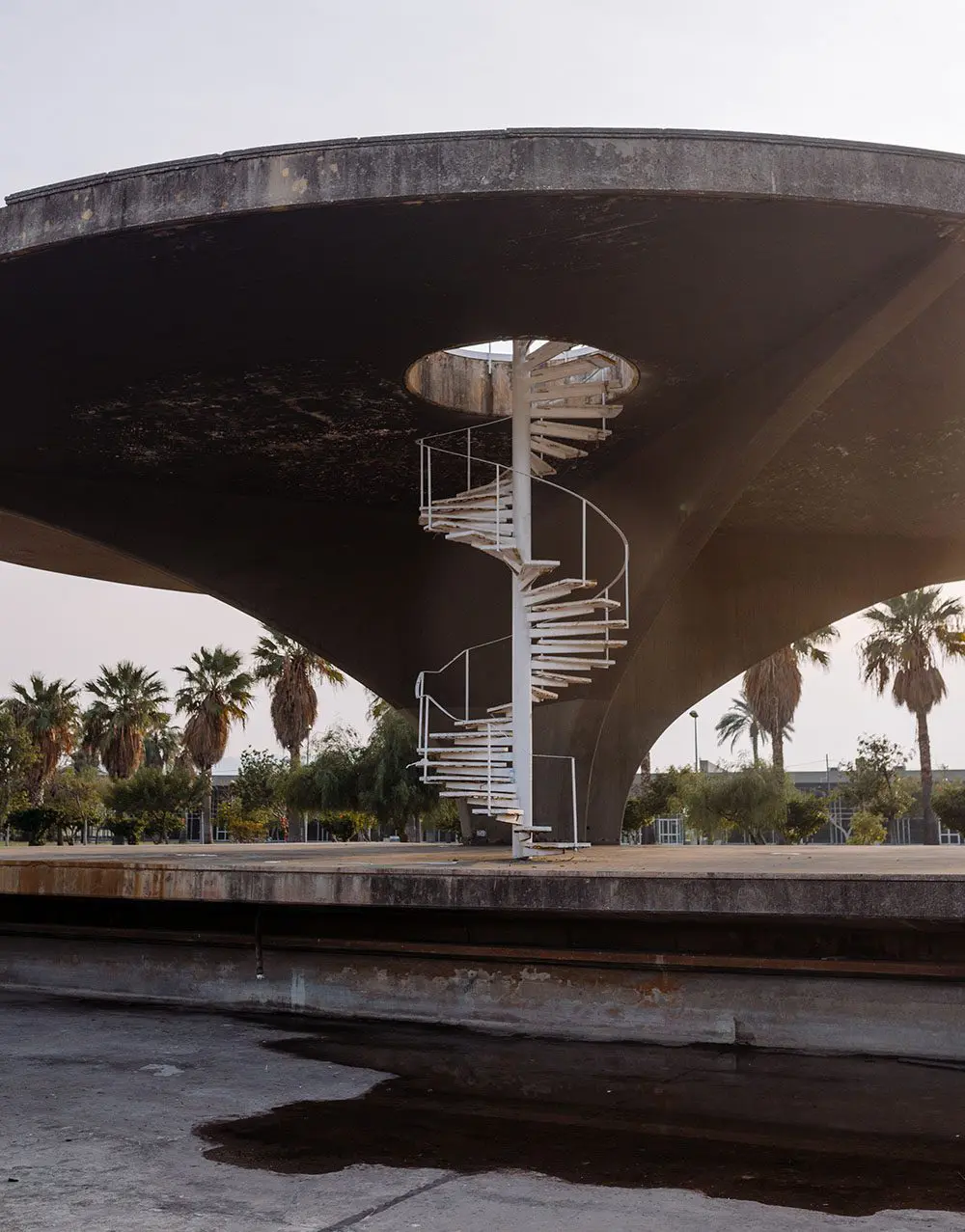
The Helipad shows the stark simplicity of the concrete structures. Photo: Alex Atack.
“It had been a bunker, there had been fires, it was completely overgrown, so we began by cleaning, and then researching how Niemeyer would have completed it, because it was a shell,” Fayad says. “Then it became a question of how you seal it, and how you embrace the open floor plan, which is really its essence, while also allowing the insertion of a new programme. It was really a beautiful challenge.”
Daunting, too. Not just because of the architectural pedigree, but because, between “Eurocracy” and Levantine foot-dragging, the studio ended up with a three-month deadline. Turning to local craftsmen, and proving the aphorism that necessity is the mother of invention, they discovered that going local was not only faster; it also created important connections between the city and the fair.
Working from Niemeyer’s plans, Fayad and Kettaneh devised an approach they felt respected his original intention for the open-plan, introverted space, which is oriented around a central courtyard. Their intervention was minimal, but meaningful. Every addition can be undone, and so the graceful partition walls and the windows around the atrium float millimetres from the concrete to leave no trace if removed. It is so subtle, in fact, that the casual visitor might wonder if anything at all was done.
That notion pleases Kettaneh. “Some people do ask what we did. It’s not clear to them if this glass partition was there already, or if we added it. Actually, that’s the most beautiful compliment we could get as architects, because it means our intervention respects the original architecture.”
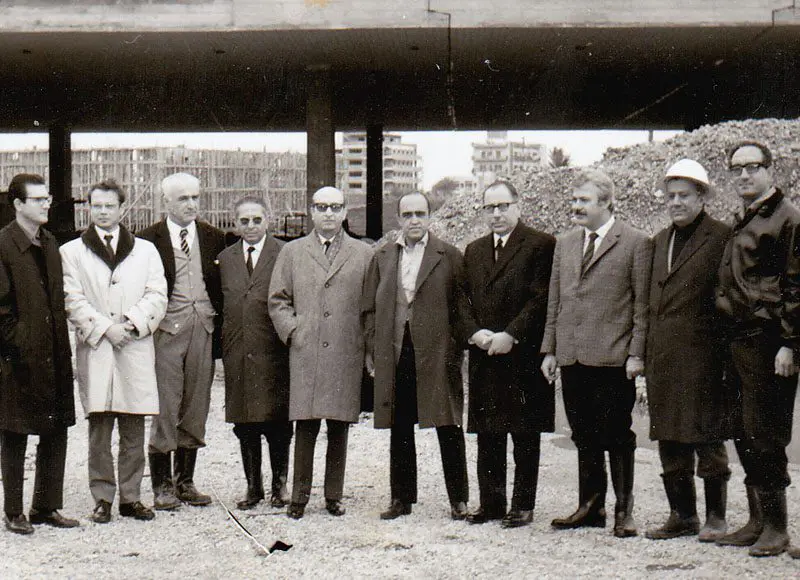
Oscar Niemeyer, fifth from the right, with contractors, consultants and officials visiting the site in January 1967. Photo courtesy of Wassim Naghi / Al Inshaa newspaper records.
Their thoughtful approach earned them an Aga Khan Award last year, and even those who don’t agree with the guesthouse’s new function admire the way the studio did the job. “They were sensitive and very elegant. They respected Niemeyer’s original design so much that maybe he deserves a share in the award,” Naghi jokes.
Still, half a building and international protection won’t solve the fair’s problems, especially given the ever-present spectre of structural decay.
“It looks easy, until you’re inside and you understand the amount of degradation and the budget needed just to consolidate buildings,” Naghi says. “The government is broke, and private investors are put off by the complexity and level of intervention needed.”
For Tabet, East Architecture’s success, combined with the UNESCO listing, and the global ecosystem of expertise, funding and interest it unlocks, has changed the equation. Naghi adds that despite Lebanon experiencing the most acute financial crisis the world has seen since the 1930s, he’s already fielding calls from investors wanting to get involved.
With a masterplan being drawn up by UNESCO and the Getty Foundation, and the necessary legislation and oversight in place, both men believe that given its newly elevated status and Tripoli’s potential as a major entrepôt once stability returns to the region, the fair is a tempting investment.
Properly handled, perhaps given over to mixed commercial, cultural and creative use, the project Oscar Niemeyer listed as one of his favourites in his overview of his long career, My Architecture, might finally come to life. And if geopolitics can be kept at bay, this long-delayed modernist marvel might even give Al Fayha another chance to bloom.

